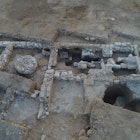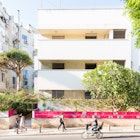Israeli archaeologists working at the ancient site of En Esur (Ein Asawir) have uncovered a vast 5000-year-old city that they have dubbed the New York City of its time.

Archaeologists from the Israel Antiquities Authority (IAA) said the excavations carried out over the course of two-and-a-half years revealed the biggest and most sophisticated settlement excavated in Israel from the Bronze Age era. The site is located halfway between Tel Aviv and Haifa and was revealed during roadworks on a new interchange to the town of Harish. Researchers said the discovery "dramatically changes" their understanding of the period, as the population moved from rural to mostly urban environments.
"This is a huge city – a megalopolis in relation to the Early Bronze Age, where thousands of inhabitants, who made their living from agriculture, lived and traded with different regions and even with different cultures and kingdoms in the area," Itai Elad, Dr. Yitzhak Paz and Dr. Dina Shalem, directors of the excavation, said in a joint statement. "This is the Early Bronze Age New York of our region; a cosmopolitan and planned city."
The remains of residential buildings, diverse facilities, public buildings, streets, alleyways and even a ritual temple were uncovered during excavations. Inside the temple were burnt animal bones (evidence of sacrificial offerings), rare figurines and a huge stone basin for liquids, which archaeologists assume was used during performance of religious rituals. There also were millions of pottery fragments, flint tools and stone vessels.
The Antiquities Authority said that during the dig, archaeologists also found evidence of an earlier settlement dating back 7000 years underneath the city’s houses. It said that two nearby springs were likely to have drawn people to the area, as well as fertile land for crops.

Excavations of the area have been financed by Netivei Israel – the National Transport Infrastructure Company, who have carried out changes to their Harish interchange plans to protect the site of the salvaged city. The archaeological ruins are documented using advanced means; they will be covered in a controlled manner, studied and investigated by IAA researchers, and the new interchange will be built high above these ruins "to permit its preservation for future generations."












